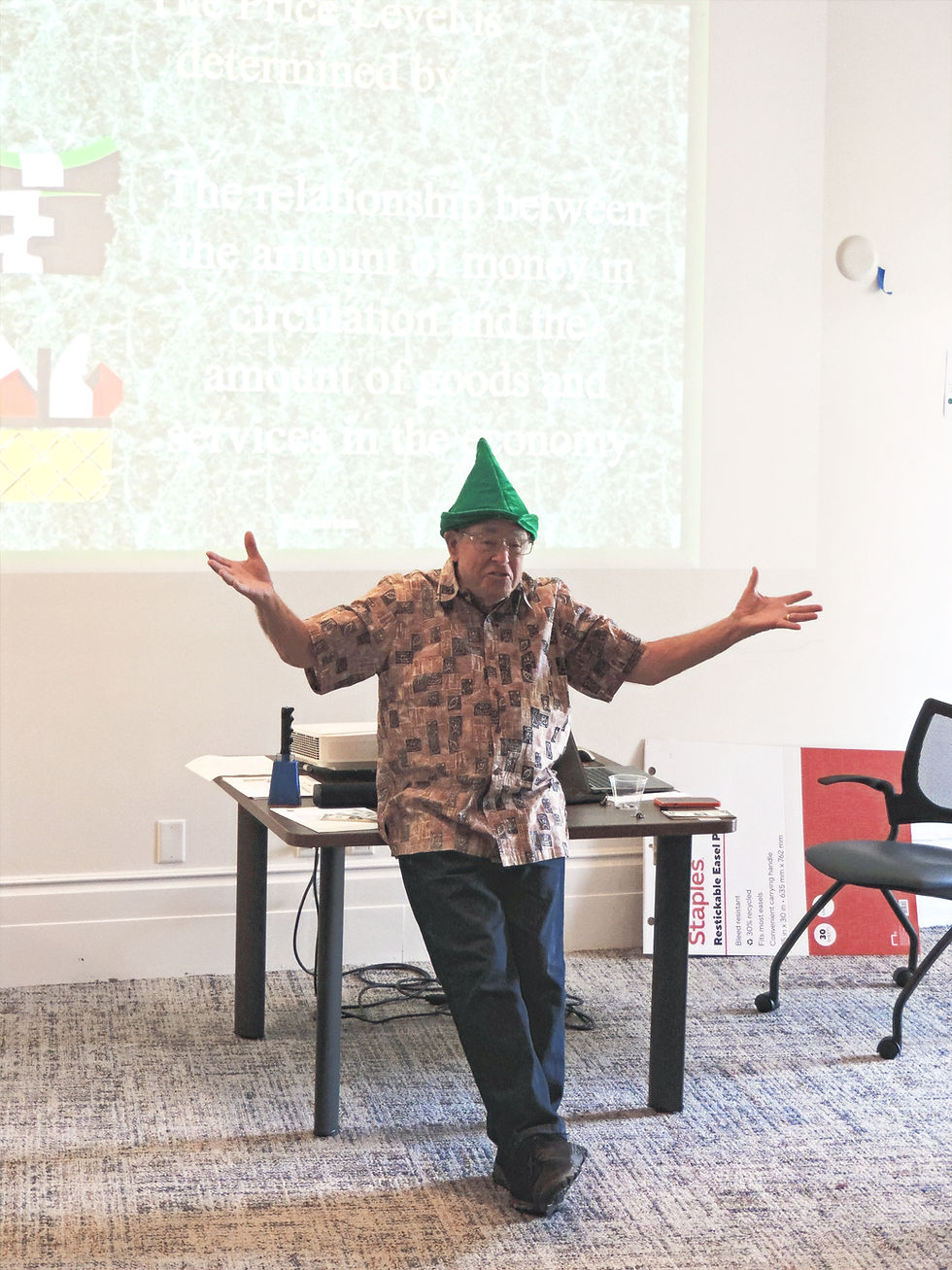Grumbling 1: Rethinking K-12 Economics
- Jim Charkins

- Dec 14, 2023
- 3 min read
Updated: Jan 4, 2024

After fifty-five years of teaching economics across the country from kindergarten to the Ph.D. level, I have reached some conclusions that, I hope, will go against the grain. I think that I have been doing it wrong for most of that time and I think that I am not alone in doing it wrong. So this is the first of a series of grumblings from a grouchy old economist in the hopes that these grumblings might stir up some introspection among Economics teachers.
To begin, let’s think about what Economics education can and should be. Economics is more than an academic discipline; it is a skill that can empower all students to make informed decisions that affect their future. As such, like math and language arts, it should begin in pre-school or kindergarten. Let’s help students learn how to make informed decisions about the use of their most important resource (human capital - an individual’s knowledge, skills, experience, and personal qualities) to achieve their goals. In vogue today is an emphasis on personal finance education, often in competition with Economics education. In fact, personal finance education is an application of Economic reasoning. If we are going to begin in the early grades to teach about money, let’s do the same teaching about human capital. What is about you that makes you unique? How can you use and develop those characteristics to achieve your goals? What are your goals?
This leads to a more appropriate, relevant and accessible definition of economics. Rather than “the study of the production, consumption, and distribution of scarce goods and services among alternative uses,” (which meant nothing to me when I took my first Economics course) how about “the skill of decision making concerning the use of resources to achieve goals”? Three words…decisions, resources, goals. Doesn’t that really say it all? Armed with this definition, teachers can help students begin to investigate the meanings of those three words and integrate them into their vocabulary…at an early age. Kindergarten teachers can help students identify decisions that they make. First-grade teachers can introduce decisions about the use of resources emphasizing human capital. Second-grade teachers can help students learn about goals, decisions and costs of decisions. By third grade, we’re off the races with full blown benefit cost analysis which can be integrated and reinforced through grades 4-11 and practiced in the required 12th grade course. This may sound overly ambitious, but I’ve seen it done.
In terms of marketing Economics education, we have to stop selling a product that few want. Most parents and teachers don’t care if their students learn that the marginal cost curve intersects the average variable and average total cost curves at the minimum point of those curves. They also don’t care that the production possibilities curve is a rectangular hyperbola asymptotic to both axes. They would, however, be delighted to know that their students were learning decision-making skills, the workings of markets (particularly labor markets), the impact that changes in macroeconomic variables have on their students’ futures, the effect of different economic policies on themselves and others, and the ability to use all those skills to engage in civil discourse and to plan their future. That can be empowering! Economics is too important and too useful to limit to a few Economics literati. Let’s spread it to the masses and let’s not wait until the 12th grade.
For questions or comments, reply to charkinsjim@gmail.com.



